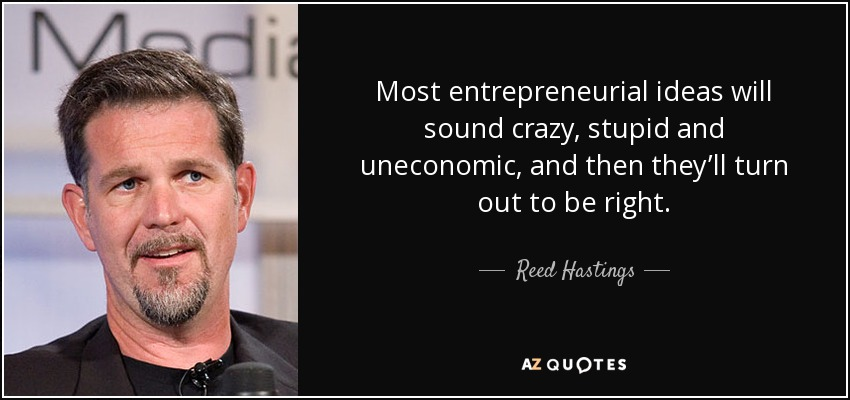Startups don’t have a corner on the strategy market. They haven’t got more ideas on how to disrupt, they haven’t got better innovation, better execution or better talent. Their best assets are usually,
- They are making one bet, so they are going loooong on getting the thing they are passionate about to work, it’s very much a boom or bust game,
- They start with an open mindset on what is possible and this mindset helps them try new, surprising or bold approaches
When Airbnb first started they actually insisted on their hosts having airbeds. (It was in their name after-all.) Normal beds were not allowed. They were even asked at one point by one of the hosts if it was ok if they put an airbed on top of one of their perfectly good, ‘normal’ beds to satisfy the policy. The answer was no.
That is an example, right there, of how Airbnb initially said no to their next strategy. They also said no early on to whole apartments and houses being rented out. Lucky for them they did the pivots required to grow. That’s now two thirds of their business globally.
Cast yourself as the MD of the Hilton or Marriott and let’s imagine Brian Chesky and Joe Gebbia were your employees and they pitched their idea for Airbnb to you. “There is a way for us to increase the size of the accommodation market…we should let private citizens put air beds in their homes…… Hmmm – that would probably have been a quick discussion.
If ideas are being pitched to you,
chances are you have already said no to your next growth story.
The ideas may have sounded way out, difficult, too small at first, slightly crazy and definitely uneconomic.
A strategy that is more about growth generation than it is about ‘steady as she goes’ will require something new. But it may not be what you think. It requires a new mindset and approach to strategy innovation for your next Growth Story.
You may or may not have a sophisticated strategy process (many I have seen seem a lot like an accounting process unfortunately).
Some of you may be getting ideas regularly in and from your teams. Some of you may have an innovation lab or even be collaborating with startups.
But how do you know which ideas you should pursue if you accept that some of the best ideas may initially sound a bit crazy?
There is the lean startup methodology where you launch Minimum Viable Products into the market and test what works and what doesn’t. Fail fast they say but most important don’t let the perfect be the enemy of the good. So very trial and error.
Some companies just vote.
Some companies put it in front of a panel (think Shark Tank – pleeeeasse!)
Some companies let the smart people decide (you know the senior ones who are smarter – cough, erhhhmm)
How do you stop filtering, distilling and plain old saying no to your next growth stories?
Here’s a few tips
- Start with ideas in the right zone to begin with.
- Don’t ask your team to come up with a new idea for growth for the business and that’s it. That could lead to literally anything. The request needs to be narrowed down to a key area or set of criteria. We don’t want ideas on how to design a milk ordering process so you don’t run out. Don’t have a world of ideas to play with. Give people a narrow brief where you really need something or a clear set of key criteria to meet to provide a boundary for their ‘idea zone’.
For example, Our supermarkets could have said recently – we need an idea that dramatically reduces the number of plastic bags used. Seeking innovatively ideas for a way to reduce or eliminate plastic bags, that doesn’t put pressure on our customers to remember their own bags. The cost to us needs to be below $0.20 per shop per shopper.
- Identify which fit business models are growing right now
- Clearly subscription models, marketplaces, collaborative communities, more direct distribution channels (disintermediation) and product-based businesses turning their offer into a service-based business are increasing trends
- Identify which fit trends that have momentum
- Personalisation, mining and tapping into data, the gig economy, the female economy, ownership to rental, on demand delivery are strong streams
- Identify which catalysts are present for the buyer
- Saving time, money or increasing enjoyment
- Give people a sense of purpose or contribution to a better world
- Give people a community they can belong to
- Insist on one ‘wacky’ idea in the mix
- One that if you pull it off would change the game in your market and you would be the leader. A portfolio approach to risk is needed. There is always a place for fixed term deposits, but everyone needs a bit of risk in the mix to provide anything better than a mediocre return
Good luck in your hunt for your next growth story


Comments are closed.